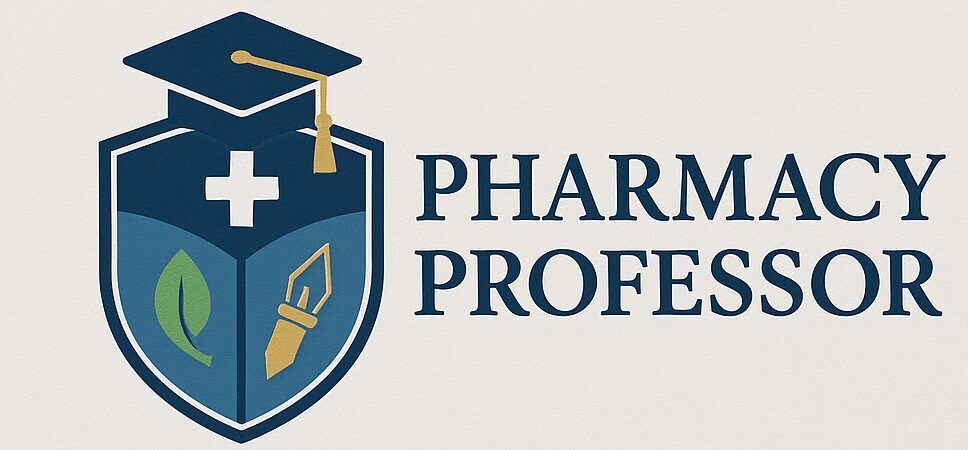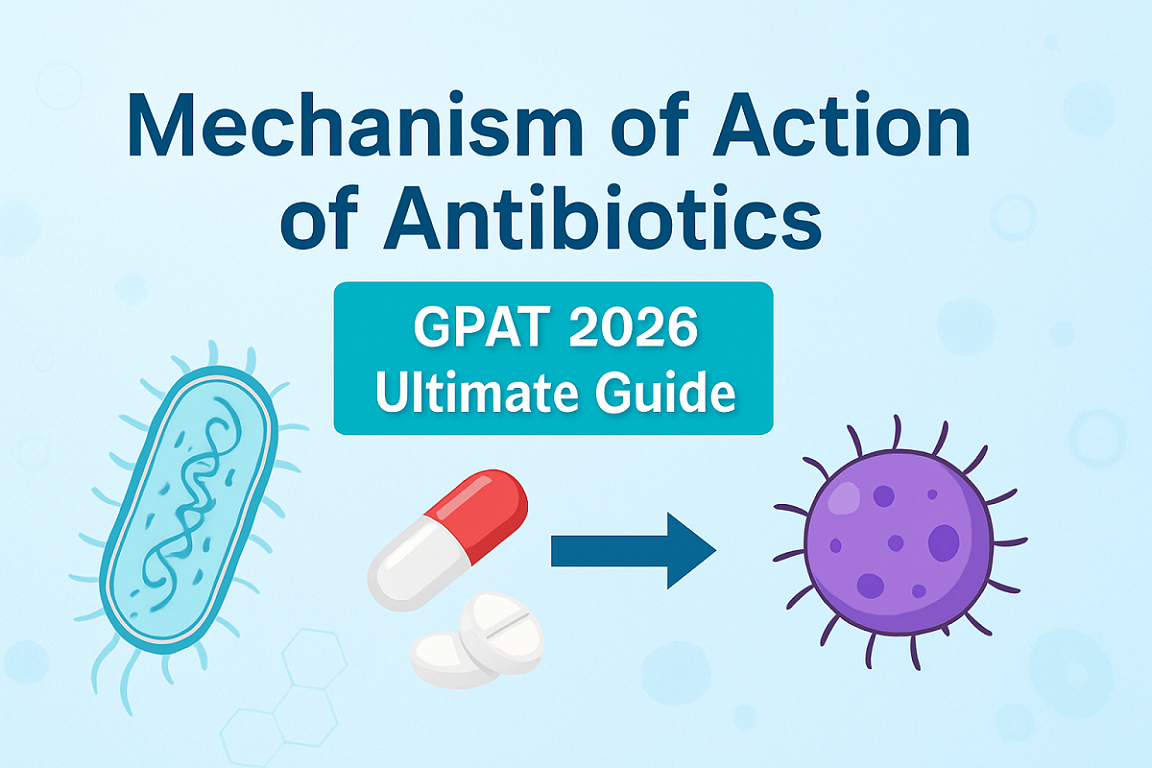1. Introduction: Life Before Antibiotics
Mechanism of Action of Antibiotics became a game-changer in modern medicine—but to understand its impact, we must first look at the grim reality before antibiotics were discovered.
Before the era of antibiotics, even minor bacterial infections often turned fatal. The world suffered from:
- High mortality from simple wounds
- Deadly outbreaks of pneumonia, tuberculosis, and cholera
- Unsafe surgeries due to infection risks
- No protection against postpartum infections or septicemia
Back then, doctors relied only on herbal remedies, antiseptics, and supportive care. There were no medicines that could directly target and kill bacteria. Diseases that today require just a short antibiotic course often resulted in prolonged illness, permanent disability, or death.
This pre-antibiotic era was marked by helplessness, fear, and an overwhelming number of fatalities. Humanity desperately needed an effective, bacteria-specific treatment—and that’s when the mechanism of action of antibiotics changed everything.
2. History of Antibiotics: The Game-Changer Discovery
The mechanism of action of antibiotics cannot be fully appreciated without understanding the revolutionary history behind their discovery. It all began in 1928, when Scottish bacteriologist Alexander Fleming stumbled upon a groundbreaking observation during his research on Staphylococcus bacteria.
He found that a blue-green mold, Penicillium notatum, had accidentally contaminated one of his petri dishes—and miraculously destroyed nearby bacterial colonies.
This marked the isolation of penicillin, the world’s first true antibiotic.
2.1 Antibiosis – Nature’s Own Defense System
This unexpected event revealed a powerful natural process known as antibiosis—a form of microbial warfare in which one microorganism inhibits the growth of another. The mold secreted a chemical compound toxic to bacteria, yet harmless to human cells.
This simple but profound phenomenon triggered a medical revolution that would save millions of lives.
2.2 Microbiological Roots: Nature as the Real Antibiotic Factory
Inspired by Fleming’s discovery, scientists explored soil-dwelling microbes and natural environments in search of more antibiotic-producing organisms. This led to the discovery of:
- Streptomycin from Streptomyces griseus – effective against tuberculosis
- Tetracycline, Erythromycin, and Chloramphenicol – isolated from actinomycetes
- Cephalosporins – derived from Acremonium fungus, active against penicillin-resistant bacteria
These natural discoveries not only expanded the classification of antibiotics but also influenced the understanding of their mechanisms of action, from inhibiting bacterial protein synthesis to disrupting cell walls.
3 Classification of Antibiotics
Antibiotics can be classified in multiple ways depending on their chemical structure, mechanism of action, spectrum of activity, and source. Understanding these classifications is essential for selecting the right antibiotic in clinical and pharmaceutical settings.
3.1 Based on Chemical Structure
- Beta-Lactam Antibiotics
These contain a β-lactam ring and inhibit bacterial cell wall synthesis.
– Penicillins
– Cephalosporins
– Carbapenems
– Monobactams - Aminoglycosides
Inhibit protein synthesis by binding to the 30S ribosomal subunit.
– Streptomycin, Gentamicin, Amikacin - Tetracyclines
Broad-spectrum antibiotics that bind reversibly to 30S ribosomes.
– Doxycycline, Minocycline - Macrolides
Act on the 50S subunit of bacterial ribosomes.
– Erythromycin, Azithromycin - Fluoroquinolones
Inhibit bacterial DNA gyrase and topoisomerase IV.
– Ciprofloxacin, Levofloxacin - Sulfonamides
Structural analogs of PABA that inhibit folic acid synthesis.
– Sulfamethoxazole, Sulfisoxazole - Glycopeptides
Block peptidoglycan polymerization in cell wall synthesis.
– Vancomycin, Teicoplanin - Polymyxins
Disrupt bacterial cell membranes, mainly used for gram-negative infections.
– Polymyxin B, Polymyxin E (Colistin) - Nitroimidazoles
Disrupt DNA synthesis, especially in anaerobes.
– Metronidazole, Tinidazole - Oxazolidinones
Inhibit initiation complex formation in protein synthesis.
– Linezolid - Others
– Chloramphenicol (protein synthesis inhibitor)
– Rifampicin (inhibits RNA polymerase)
– Daptomycin (disrupts membrane potential)
3.2 Based on Mechanism of Action
- Inhibitors of Cell Wall Synthesis
– Penicillins, Cephalosporins, Vancomycin - Inhibitors of Protein Synthesis
– 30S Subunit: Aminoglycosides, Tetracyclines
– 50S Subunit: Macrolides, Chloramphenicol, Clindamycin - Inhibitors of Nucleic Acid Synthesis
– Fluoroquinolones (DNA)
– Rifampicin (RNA) - Inhibitors of Metabolic Pathways
– Sulfonamides, Trimethoprim (Folate synthesis inhibitors) - Disruption of Cell Membrane Integrity
– Polymyxins, Daptomycin
3.3 Based on Spectrum of Activity
- Broad-Spectrum Antibiotics
Effective against both gram-positive and gram-negative bacteria.
– Tetracyclines, Chloramphenicol, Fluoroquinolones - Narrow-Spectrum Antibiotics
Effective against either gram-positive or gram-negative bacteria only.
– Penicillin G, Vancomycin
3.4 Based on Source of Origin
- Natural Antibiotics
Produced directly by microorganisms.
– Penicillin (from Penicillium notatum) - Semi-Synthetic Antibiotics
Chemically modified derivatives of natural antibiotics.
– Ampicillin, Amoxicillin - Synthetic Antibiotics
Entirely man-made compounds.
– Sulfonamides, Fluoroquinolones
3.5 Based on Antibacterial Activity
- Bactericidal Antibiotics
Kill bacteria directly.
– Aminoglycosides, Beta-lactams, Fluoroquinolones - Bacteriostatic Antibiotics
Inhibit bacterial growth and reproduction.
– Tetracyclines, Sulfonamides
3.6 Anti-Tubercular Drug Classification
- First-Line Anti-TB Drugs
– Isoniazid, Rifampicin, Pyrazinamide, Ethambutol - Second-Line Anti-TB Drugs
– Streptomycin, Ethionamide, Cycloserine, Fluoroquinolones
3.7 Anti-Leprotic Drug Classification
- Common Anti-Leprotic Agents
– Dapsone, Rifampicin, Clofazimine

4. Mechanism of Action of Antibiotics
Each antibiotic works differently to inhibit or kill bacterial cells. Understanding the mechanism of action of antibiotics is crucial in selecting the right types of antibiotics for infection treatment.
4.1 Inhibition of Bacterial Cell Wall Synthesis
This is one of the most important mechanisms used by antibiotics like beta-lactams and glycopeptides.
- In Gram-negative bacteria:
Beta-lactam antibiotics enter through porin channels and bind to Penicillin-Binding Proteins (PBPs). This interferes with the cross-linking of peptidoglycan in the bacterial cell wall, leading to lysis. - In Gram-positive bacteria:
Since these lack an outer membrane, beta-lactams directly interact with PBPs. Vancomycin, a glycopeptide, binds to D-Ala-D-Ala residues, inhibiting cell wall synthesis.
4.2 Disruption of Cytoplasmic Membrane
This mechanism targets the bacterial membrane’s integrity.
- Polymyxins (e.g., Polymyxin B, Colistin) bind to phospholipids in Gram-negative membranes, increasing permeability. This causes leakage of ions and molecules, leading to bacterial death.
4.3 Inhibition of Protein Synthesis
Protein synthesis inhibition is a common target, especially in broad-spectrum antibiotics.
- Tetracyclines: Bind to 30S ribosomal subunit; prevent tRNA attachment – bacteriostatic.
- Aminoglycosides: Bind to 30S; cause misreading of mRNA – bactericidal.
- Macrolides, Lincosamides, Chloramphenicol: Bind to 50S subunit; block peptide elongation – mostly bacteriostatic.
- Linezolid: Binds to 23S RNA of 50S subunit; inhibits 70S complex formation – bacteriostatic.
4.4 Inhibition of Nucleic Acid Synthesis
Disrupts DNA or RNA synthesis pathways in bacteria.
- Fluoroquinolones: Inhibit DNA gyrase and topoisomerase IV, blocking DNA replication.
- Rifampicin: Inhibits DNA-dependent RNA polymerase, halting RNA synthesis.
4.5 Inhibition of Folic Acid Synthesis
This affects the synthesis of nucleic acids indirectly.
Trimethoprim: Inhibits dihydrofolate reductase; blocks tetrahydrofolate production – bacteriostatic.
Sulfonamides: Compete with PABA; inhibit dihydropteroate synthase – bacteriostatic.
5 Clinical Relevance of Antibiotic Mechanism of Action
Understanding the mechanism of action of antibiotics is crucial in clinical decision-making. Each antibiotic class targets specific bacterial structures or functions — such as the cell wall, ribosomes, or DNA — making them effective against different types of pathogens.
In clinical practice, physicians consider:
- Site of infection (e.g., lungs, skin, bloodstream)
- Causative organism (e.g., Gram-positive, Gram-negative, anaerobes)
- Antibiotic classification and its ability to reach the target tissue
- Spectrum of activity and resistance patterns
- Patient-specific factors such as age, renal function, immune status
For example:
- Beta-lactam antibiotics (e.g., penicillins) are effective for skin and respiratory infections because they inhibit cell wall synthesis.
- Aminoglycosides are potent against Gram-negative infections but are nephrotoxic, so dosing is carefully adjusted.
- Macrolides are preferred in respiratory infections due to their intracellular activity and broad spectrum.
These clinical considerations help determine the best type of antibiotic to use, minimizing treatment failure and avoiding the emergence of antibiotic resistance. CDC – Antibiotic Use and Resistance
Learn more about how correct antibiotic selection based on mechanism of action improves clinical outcomes and reduces resistance.
By integrating antibiotic classification with their mechanisms, clinicians apply evidence-based practices for optimal patient care — a key part of hospital-based antibiotic stewardship programs.
Frequently Asked Questions (FAQ)
Q1. What is the history of antibiotics?
The history of antibiotics began with the discovery of penicillin by Alexander Fleming in 1928. Since then, many types of antibiotics have been developed to treat bacterial infections effectively.
Q2. How are antibiotics classified?
Classification of antibiotics is based on their chemical structure, mechanism of action, and antibacterial spectrum. Common classes include beta-lactams, macrolides, tetracyclines, and aminoglycosides.
Q3. What are the types of antibiotics used in clinical practice?
The main types of antibiotics include bactericidal (kill bacteria) and bacteriostatic (inhibit growth). Each type targets bacteria in different ways, such as disrupting the cell wall or inhibiting protein synthesis.
Q4. Why is antibiotic classification important in medicine?
Understanding the classification of antibiotics helps clinicians choose the right drug, reduce side effects, and prevent antibiotic resistance.
Q5. Can misuse of antibiotics reduce their effectiveness?
Yes, improper use of antibiotics can lead to resistance, making infections harder to treat. Always follow medical advice while taking antibiotics.
Conclusion
Understanding the mechanism of action of antibiotics is essential in modern pharmacy and medicine—not just for choosing effective treatments but also for safeguarding against antimicrobial resistance. Whether it’s inhibiting cell wall synthesis or disrupting DNA replication, each mechanism plays a vital role in achieving therapeutic success.
For students aiming to master antibiotic mechanisms and classifications, the BP303T Pharma Microbiology Notes PDF offers organized, unit-wise insights on microbial action, resistance, and pharmacology—ideal for B.Pharm preparation.
You can also enrich your understanding with posts like:
- Ayurvedic Herbs for Inflammation Relief—discover how natural remedies complement modern therapy.
- Truths of Charak Samhita and Ayurveda—find ancient pharmacological wisdom still relevant today.
- History of Pharmacy in India—trace the evolution from flora-based remedies to modern drug discovery.
Stay updated with our latest pharmacy tutorials and career coaching on our YouTube channel:
📺 Pharmacy Professor – YouTube
Disclaimer
This content is intended for educational purposes only. It is based on standard pharmacy syllabi and is designed to help students understand the Mechanism of Action of Antibiotics, including their discovery, classification, and responsible use. The information provided should not be considered a substitute for professional medical advice or guidance from licensed healthcare providers.

